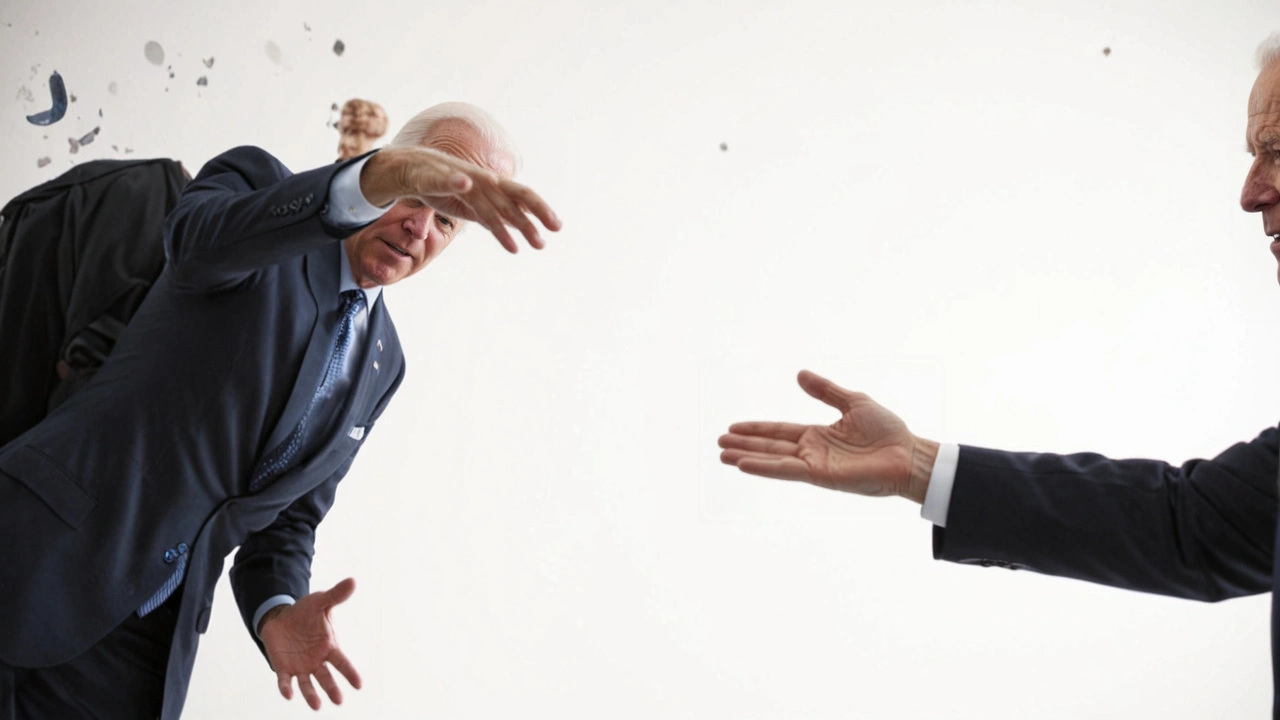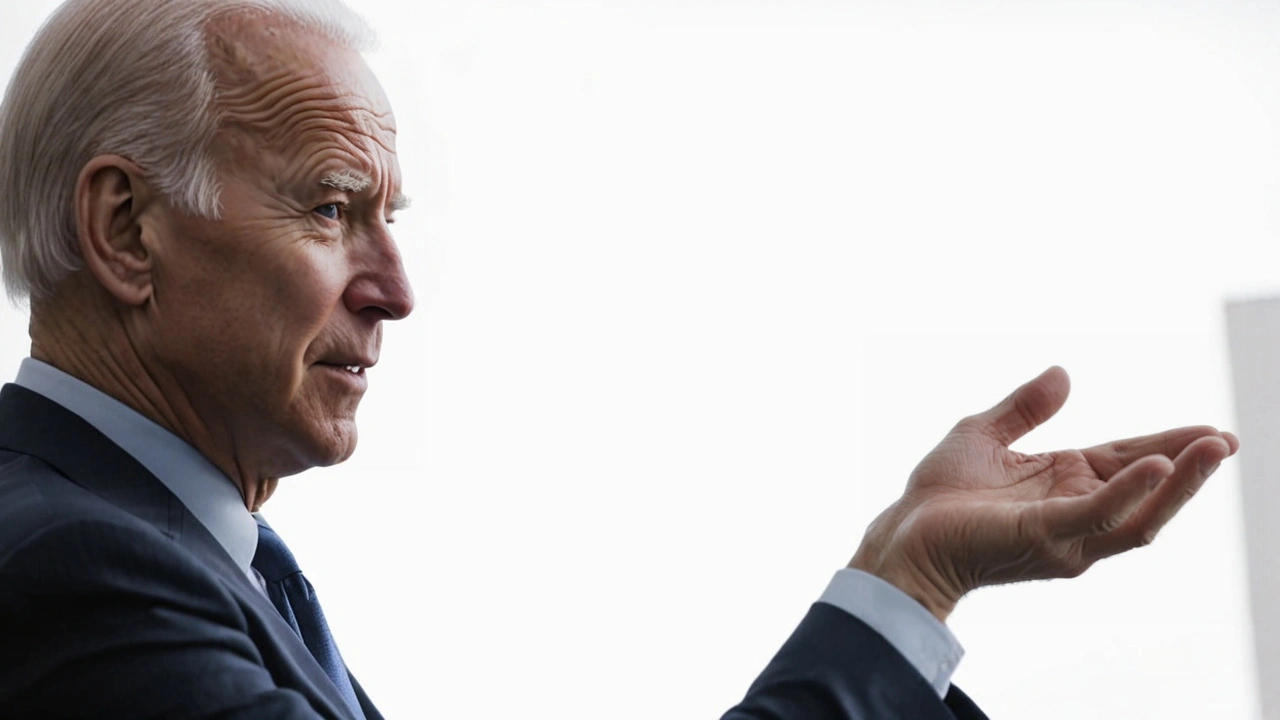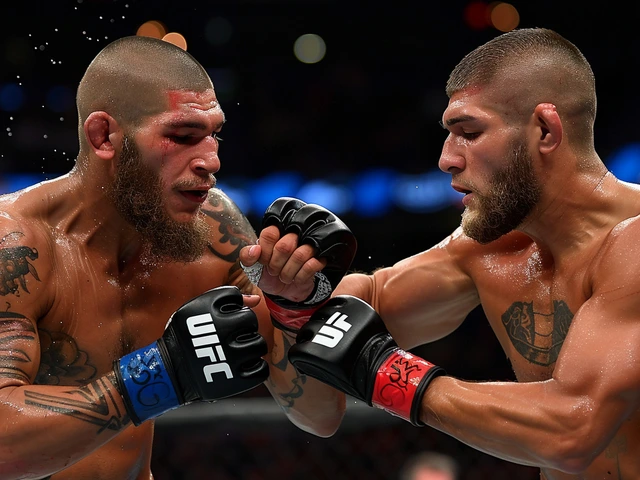Trump's Merchandise Outshines Biden's in East Hampton Store
In the quaint town of East Hampton, New York, lies a small campaign merchandise shop that has been a local fixture since 2004. The store, managed by Valerie Smith, has become a barometer of political enthusiasm through its simple yet telling product: 'political cups.' These cups sport the names of various presidential candidates, allowing customers to showcase their political allegiance with each sip of coffee or tea.
This year has presented an unexpected twist. Despite his enduring influence in the Republican Party, the sheer volume of Donald Trump's merchandise flying off the shelves has caught many by surprise. More startling, however, is the difficulty Joe Biden faces in garnering similar support. Smith reports that sales of Biden's merchandise are lagging so notably behind Trump’s that it has sparked significant conversations among political analysts and enthusiastic locals alike.
Dwindling Biden Sales Stir Concerns Among Donors
The implications of this trend stretch far beyond the walls of Smith's shop. Top Democratic donors, a crucial backbone of any presidential campaign, have taken notice. Observing the flagging sales of Biden-themed cups has reinforced a growing sense of unease about his candidacy. This concern is not localized to East Hampton— it's reverberating through the donor circuits nationwide.
Such unease isn't entirely new. After a recent debate performance that many found lackluster, the question of Biden's overall effectiveness has been at the forefront of discussions among donors. These benefactors aren't simply concerned about the optics; they are deeply worried about where to allocate their substantial financial resources. For these donors, a strong, vibrant presidential campaign is crucial, not just for the top of the ticket but also for down-ballot races that depend on a well-oiled party machinery.
The Broader Implications of Donor Discontent
The ripple effects of this donor doubt extend into the broader landscape of the Democratic Party. Successful fundraising campaigns hinge on confidence and momentum, both of which seem to be in short supply for Biden at this juncture. If top donors start pulling back, the impact could cripple the financial health of the Democratic Party, making it more challenging to support a wide range of candidates and political initiatives.
Moreover, this apparent lack of enthusiasm is not confined to private rooms and exclusive dinners. It reflects a potential shift in voter sentiment, a sense that may be echoed in polling stations come election day. Valerie Smith’s shop, with its simple inventory of cups, is proving to be an unwitting pulse-check on American politics, revealing underlying trends that could shape the forthcoming election season.

Some Donors Stay Steadfast, but Caution Prevails
Despite the mounting doubts, it would be misleading to suggest that all is lost for Biden. There remains a segment of Major Democratic donors who remain committed to his vision and policy platforms. These steadfast supporters argue that the present hesitation will dissolve as Biden clarifies his campaign goals and addresses specific voter concerns more effectively.
Yet, the broader caution exhibited by many cannot be overlooked. It creates a fragile foundation that Biden's campaign needs to navigate carefully. Ensuring robust engagement and financial contributions will require more dynamic outreach and perhaps a reimagining of campaign strategies to reignite enthusiasm and trust among donors.
The Historical Context: Merchandise as a Political Bellwether
Campaign merchandise sales have long been a quirky, yet telling indicator of public sentiment. Historically, successful merchandise sales often correlate strongly with electoral outcomes. Items like T-shirts, buttons, stickers, and even cups, offer a tangible way for supporters to express their political leanings.
During the Obama campaigns, for instance, the overwhelming sales of his merchandise mirrored his widespread popularity and ultimately his electoral victories. Trump’s current success in this domain signifies that his base remains fervently supportive, providing him a potent platform for his campaign strategies.
However, it’s essential to note that merchandise sales alone do not dictate election results. External factors such as campaign strategies, media coverage, and ground campaigns play critical roles. Yet, they undeniably offer a snapshot of grassroot enthusiasm that can energize or dampen campaign spirits.
Looking Ahead: Potential Strategies for Biden's Campaign
Biden’s team faces a critical juncture. Moving forward, there are several pathways they may consider to bridge the enthusiasm gap identified through these merchandise sales. Firstly, the campaign could double down on grassroots engagement, connecting directly with voters through town halls, community events, and social media interactions.
Additionally, revisiting the campaign’s messaging strategy might prove beneficial. Focusing on clear, compelling narratives that resonate with both erstwhile and new supporters could help reinvigorate the donor base. Amplifying the voices of key community leaders and influencers who resonate with different voter demographics might also create a more inclusive and compelling narrative.

A Pivotal Moment in the Campaign
In the dynamic and unpredictable arena of political campaigns, moments of discontent and doubt are not unusual. However, they are moments that require swift and thoughtful action. For Biden and his top Democratic donors, the message is clear: there’s work to be done, narratives to be shaped, and enthusiasm to be rekindled.
As electoral battles rage on, something as seemingly simple as the sales of campaign merchandise in a small East Hampton shop offers critical insights into the challenges and opportunities ahead. For Biden, his team, and his supporters, this is a pivotal moment that could very well shape the landscape of the 2024 election.





